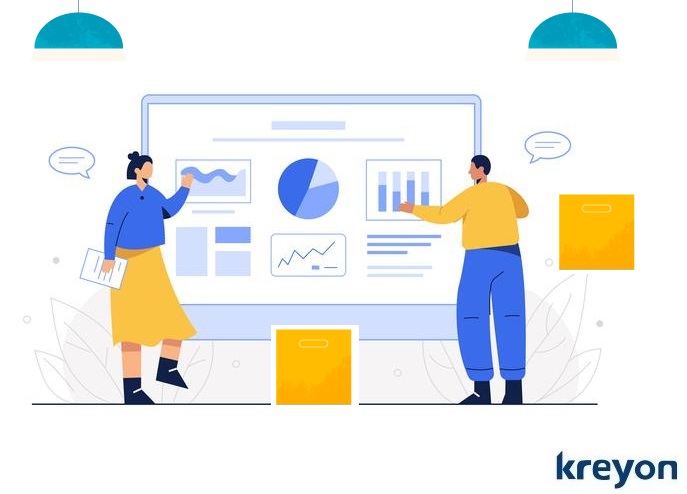Embedded Analytics: How to Build a Superior Application Experience with Embedded Analytics

Embedded analytics are core to building real time business intelligence solutions. The integrated analytics and data are tightly integrated to the applications like CRM, ERP, Accounting and Finance, or other business software applications. The embedded analytics capabilities are being adopted by companies today to brace themselves for digitisation.
The data footprint gives companies the leverage to access contextual information for taking the actions. By adding analytical and pattern recognition techniques, organisations can improve the quality of their products and services.
The embedded analytics equips organisations with real time actionable information they need to make their decisions. The information is tailored to the client use cases for e.g. creating marketing campaigns for optimising lead generation, sales conversions charts, ordering inventory items, dispatching ecommerce products to customers etc. Here’s an overview of how embedded experience elevates superior experience for customers:
1. Tools for Custom Analytics
Every organisation is run differently, they have specific processes and methods to accomplish their business goals. The self service customer analytics capabilities helps customers to design their own dashboards. For e.g. a sales manager could see the work of his direct reports in terms of calls made, proposals sent and revenue earned for the week. The sales manager and the organisation can design their dashboards as per the information that is most relevant for them.
The use of custom analytics adds interactivity, intelligence and actionable insights for specific business use cases. With self service analytics functions, companies can design graphs, charts, data metrics and their ranges as per their needs. Simple drag and drop options can be used for designing the dashboards. These dashboards can be tailored to the specific needs of the role and the most important use cases for them.
The visualisation of information can be a great enabler for key decision makers. It builds an interactive, data driven and agile enterprise, which is geared to achieve their key business outcomes. Importantly, customers can use the no code tools to build the interfaces for their business without any external help.
2. Multi Cloud & Hybrid Environment

As organisations continue to use myriad applications for running their business, data layer for these applications could be spread across different cloud providers. For e.g. an organisation could have some of its legacy data on premise, and certain application data on cloud servers like AWS, Google, Azure etc. The embedded analytics could be used to link the data sources and configure customers applications as per their day to day needs.
The multi cloud and hybrid infrastructure layers can be integrated to give end to end visibility for client applications. The clients need not bother about the underlying technology providers and can get a complete overview of their business data.
The servers could be hosted on different cloud servers, operating systems and technology infrastructure, but the integration makes everything seamless. The application can be configured with respect to the security and privacy of data as per defined organisational user privileges. An integrated SSO(single sign on) functionality is implemented for the users where they can see data across applications.
3. Data Cleansing
Many organisations especially the government enterprises suffer from duplication of data. There is a large amount of data that may not be up to date, could be inaccurate and needs to be cleansed.
Data cleansing is used for standardising the data, it is used for removing the unwanted data that may be inaccurate or obsolete. The data cleansing process makes use of information from old legacy databases, files, tables, manual records etc. The data is validated, standardised and deduplicated before it is used by the application.
The data quality drives the application and an organisation’s performance today. Old and obsolete information can cripple an organisation. The redundancies and inconsistencies of legacy application data needs to be streamlined before using it. The data cleansing efforts can work on structured and unstructured data to eliminate errors during integration efforts.
After data cleansing is done, good data quality ensures consistent reporting and elimination of redundancies in the organisation. The data reconciliation and cleaning up efforts provide a company with rich information to take the decisions with confidence.
4. AI & ML Tools

The AI and ML tools are used for deriving actionable insights driven by learning obtained from data. For e.g. inventory manager can get a report on the predictive prices for a product based on historical purchase prices and compare it to the online prices.
AI and ML tools can be used for more accurate forecasting for sales, lead conversions, and accounting etc. The data footprint is being analysed for patterns and learning is used for providing intelligent reports for companies. Marketing campaigns can use AI to identify the right customer segmentation, use online data for learning about client needs and provide qualified leads to the sales teams.
AI algorithms are used by companies to come up with new insights. The data patterns are used for constructive insights inline with company goals. The chatbots and conversational tools can be used by teams to query the information they’re looking for. In one of the organisations, we implemented a system where the AI system recommends training by creating a win-win situation for the company as well as the employee.
The insights reports can be sent to the management with inputs on how they can improvise their business to meet the desired outcomes.
5. Map Client Outcomes
A good analytics software maps the customer’s desired outcomes to the product or application. Take an e.g. of a lending company that needs to process underwriting claims. The objective of the lending company is to fast track the underwriting process and disburse loans to the applicants.
The embedded analytics will display the average no. of pending applications at any given time, it will also show the average time for processing an application. Suppose the outcome of the lender is to disburse loan application within 3 days, then it can take actions based on the data metrics to process applications.
Overall, embedded analytics makes organisations take actions faster based on the data. The loan application can be analysed and assessed within minutes to help executives take the decision to approve or reject the application. A good design helps companies map their desired outcomes with data. So, if the lender wants to reduce the application approval time to 3 days, they can track the data and act swiftly to meet their targets driving superior performance.
6. Domain Expertise

Figuring out your client needs is the key to successful implementation of embedded analytics. Innovative solutions are often delivered by teams, which can work with domain experts to implement the right solutions for them.
Your customers know their needs better than you. But you can help them to use technological solutions that alleviate their pain points. When the team knows the criteria for a client’s success, they can build the solutions accordingly. Domain and industry expertise is useful to understand the criteria, key outcomes clients are looking for.
The domain expertise from these clients can be used for building breakthrough analytics solutions. Product or service innovation can be prioritised in line with the customer needs. When technology teams and domain expertise work together, it can create breakthrough solutions for them.
